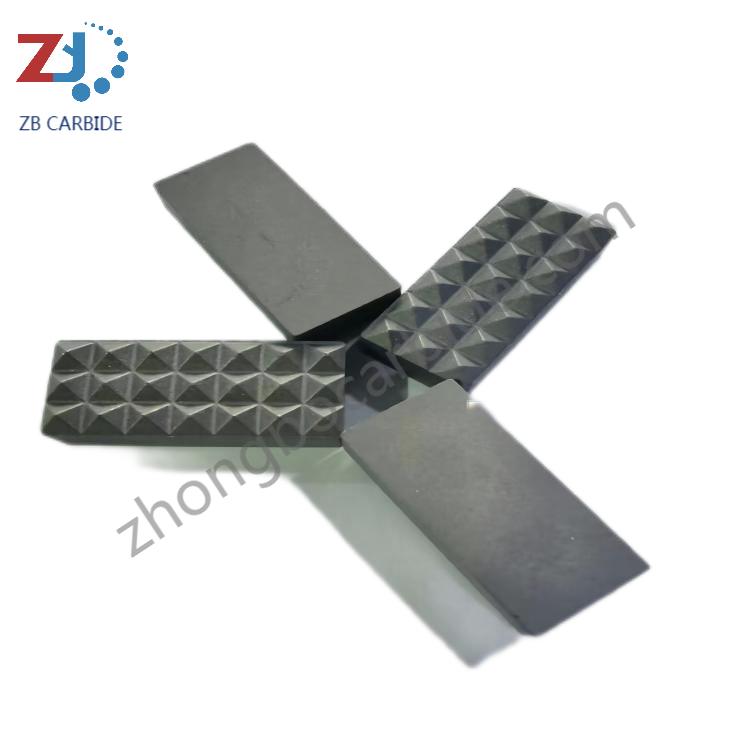
In the realm of machine tool applications, the choice of grippers plays a critical role in ensuring precision, efficiency, and productivity. Among the myriad options available, carbide grippers stand out for their exceptional durability, gripping strength, and resistance to wear and tear. But how do you choose the right carbide gripper for your specific machine tool application? In this comprehensive guide, we'll explore the factors to consider, the types of carbide grippers available, and tips for selecting the perfect gripper to meet your machining needs.
Understanding Carbide Grippers
Before we delve into the selection process, let's first understand what carbide grippers are and their significance in machine tool applications. Carbide grippers, also known as carbide jaws or carbide inserts, are precision-engineered components used in various machining operations to securely hold and position workpieces during cutting, milling, grinding, and other manufacturing processes. Made from tungsten carbide or other carbide materials, these grippers offer superior hardness, toughness, and wear resistance, making them ideal for demanding machining environments.
Factors to Consider When Choosing Carbide Grippers
When selecting carbide grippers for your machine tool applications, consider the following key factors to ensure optimal performance and compatibility:
●Material Compatibility: Choose carbide grippers that are compatible with the materials you'll be machining, whether it's steel, aluminum, titanium, or other alloys. Different materials require different gripping surfaces and configurations to ensure secure and stable clamping without damaging the workpiece.
●Gripping Strength: Assess the gripping strength of the carbide grippers based on the size, shape, and weight of the workpieces you'll be handling. Opt for grippers with sufficient clamping force to securely hold the workpiece in place during machining operations, minimizing the risk of slippage or distortion.
●Surface Finish Requirements: Consider the surface finish requirements of your machined components and choose carbide grippers with appropriate surface coatings or finishes to prevent marring, scratching, or deformation of the workpiece surfaces.
●Workpiece Size and Shape: Take into account the size, shape, and geometry of the workpieces you'll be machining, as well as any special features or contours that may require custom-designed grippers or specialized gripping solutions.
●Toolholder Compatibility: Ensure that the carbide grippers are compatible with your existing toolholders, adapters, or clamping systems to facilitate easy installation, setup, and interchangeability.
●Cost and Longevity: Evaluate the cost-effectiveness and long-term durability of the carbide grippers based on factors such as initial investment, maintenance requirements, and expected lifespan. Choose grippers that offer a balance of performance, longevity, and affordability to maximize return on investment.

Types of Carbide Grippers
Carbide grippers come in a variety of shapes, sizes, and configurations to suit different machine tool applications and machining requirements. Some common types of carbide grippers include:
●Standard Jaw Grippers: These grippers feature fixed or interchangeable jaws with serrated or smooth gripping surfaces for holding cylindrical, square, or irregularly shaped workpieces.
●Expanding Mandrel Grippers: These grippers use a segmented mandrel design to expand and contract, allowing for secure clamping of internally threaded or bored workpieces such as pipes, tubes, or shafts.
●Pinch Grippers: These grippers use a pinching or squeezing action to hold thin or delicate workpieces securely without causing damage or distortion.
●Specialty Grippers: These grippers are designed for specific machining applications or workpiece geometries, such as contour grippers for holding complex shapes, magnetic grippers for ferrous materials, or vacuum grippers for non-metallic materials.
Tips for Selecting the Right Carbide Gripper
To ensure that you choose the right carbide gripper for your machine tool applications, consider the following tips:
●Consult with Experts: Seek advice from experienced machinists, tooling specialists, or carbide manufacturers who can provide insights and recommendations based on your specific machining requirements and challenges.
●Perform Test Runs: Conduct test runs or trials using different carbide grippers to evaluate their performance, compatibility, and suitability for your machining processes before making a final decision.
●Consider Future Needs: Anticipate future growth, changes, or upgrades in your machining operations and choose carbide grippers that can adapt to evolving requirements or accommodate new technologies and applications.
●Invest in Quality: Prioritize quality and reliability when selecting carbide grippers, as investing in premium-grade grippers can yield higher productivity, accuracy, and efficiency in the long run.
Conclusion
In conclusion, choosing the right carbide gripper for your machine tool applications requires careful consideration of various factors, including material compatibility, gripping strength, surface finish requirements, workpiece size and shape, toolholder compatibility, cost, and longevity. By understanding the unique characteristics and capabilities of carbide grippers, as well as following the tips and guidelines outlined in this guide, you can make an informed decision that enhances the performance, efficiency, and profitability of your machining operations. With the right carbide grippers by your side, you can achieve precision, reliability, and consistency in your machining processes, ensuring quality results and customer satisfaction.

























